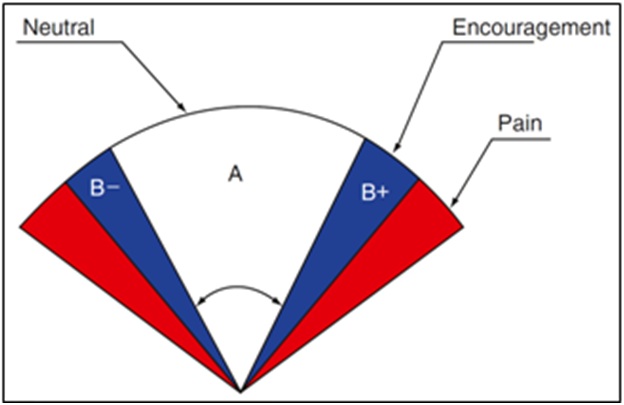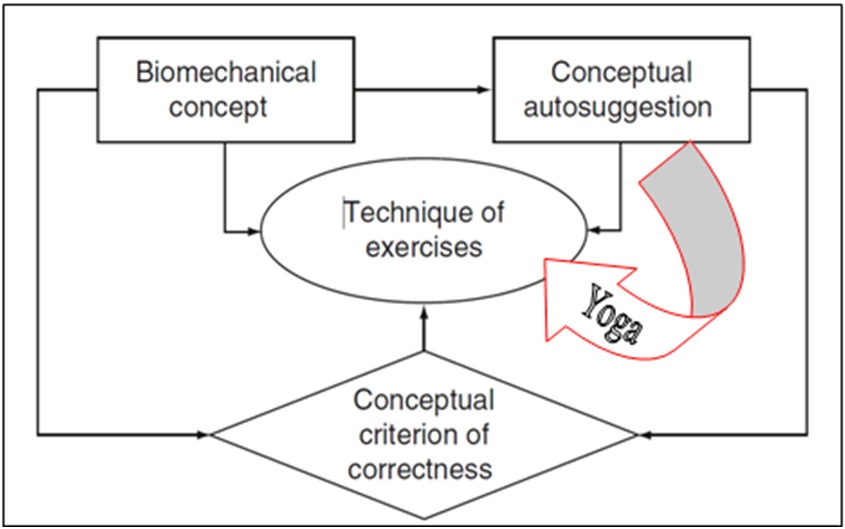
Sanomechanics and Floating Skeleton Concept for Learning and Teaching Yoga Therapy
*Corresponding Author(s):
Oleg GalibinPavlov First State St Petersburg Medical University, Russian Federation
Tel:+7 8129091608,
Email:galibino@yahoo.com
Abstract
Success in Yoga therapy depends on a quality of learning of the exercises’ physical technique and its bond with mental concentration. For many people, the mental aspect is more difficult than the physical one if a teacher’s instruction does not have a clear visual pattern. At most, rational explanations of the biomechanical meaning and outcomes of a specific exercise are substituted by references to the structures and instances, which cannot be currently measured or scientifically verified and are rather mysterious.
In a search for rational scientific models applicable to Yoga training and therapy, the author found a report on a recent experimental study on transmission of pressure from one joint capsule to the others. The study by Tufts University team demonstrated that the pressure is transmitted hydrostatically via tiny spaces between the surfaces of long bones and periosteum. This discovery points on existence of an unnoticed before subsystem in the skeletal system, which plays an important, if not a key, role in distributing loads applied to the joint cartilages. The subsystem called floating skeleton, can be kept sound with a system of sanomechanics exercises similar to yoga asanas but with a specific criterion of correctness and autosuggestions based on the Floating skeleton concept.
This paper considers an advantage of the reverse application of the Sanomechanics to traditional yoga exercises to facilitate learning by providing rational model of yoga success.
Keywords
INTRODUCTION
Biomechanical concept
 Figure 1a: Artistic illustration of the pressure transmission between joints with the subperiosteal layer of fluid;
Figure 1a: Artistic illustration of the pressure transmission between joints with the subperiosteal layer of fluid; b: Traditional representation of synovial capsules that are hydraulically isolated from each other [1].
The concept provides for a new insight to the mechanisms of joint diseases and can be used in development of the new rehabilitation strategies or for enhancing the existing therapies like yoga.
One such technique called sanomechanics was recently introduced by the Dr. Pitkin [5,6]. The exercises in this technique are judged by a unique criterion of correctness according to the signals of encouragements the body generates [7]. According to the floating skeleton concept, the role of encouragement (easing of pain or signal of pleasure) is to indicate that certain postures or movements are beneficial for restoring the hydrostatic connection of synovial capsules with the subperiosteal network illustrated in figure 1b.
Let us consider how the sanomechanics criterion of correctness is established and then how it can be applied to yoga.
Biomechanical concept
Biomechanical rationale for hydraulic connection of the joints is a possible reduction of the pressures applied to the contacting surfaces of the bone heads for protecting the cartilages [4].
The concept provides for a new insight to the mechanisms of joint diseases and can be used in development of the new rehabilitation strategies or for enhancing the existing therapies like yoga.
One such technique called sanomechanics was recently introduced by the Dr. Pitkin [5,6]. The exercises in this technique are judged by a unique criterion of correctness according to the signals of encouragements the body generates [7]. According to the floating skeleton concept, the role of encouragement (easing of pain or signal of pleasure) is to indicate that certain postures or movements are beneficial for restoring the hydrostatic connection of synovial capsules with the subperiosteal network illustrated in figure 1b.
Sanomechanics criterion of correctness
- Reach a certain posture/angle/point
- Straighten the limb/back/neck
- Move fast/slow
- Load at maximal/minimal/average level
- Make it elegant
 Figure 2: Zones of articulation in a typical joint. A, unrestricted mobility with neutral sensation; B− and B+, zones of restricted mobility with sensation of pleasure; C− and C+, zones of restricted mobility with sensation of pain [5].
Figure 2: Zones of articulation in a typical joint. A, unrestricted mobility with neutral sensation; B− and B+, zones of restricted mobility with sensation of pleasure; C− and C+, zones of restricted mobility with sensation of pain [5].Structure of sanomechanics
 Figure 3: Structure of sanomechanics (modified from [5]).
Figure 3: Structure of sanomechanics (modified from [5]).Implications for rehabilitation strategies
REFERENCES
- Pitkin M, Muppavarapu R, Cassidy C, Pitkin E (2015) Subperiosteal transmission of intra-articular pressure between articulated and stationary joints. Scientific Reports 5: 8103.
- Pitkin MR (1994) Floating skeleton concept to explain causes of injuries in spine and success of any therapeutic procedure. J Biomech 27: 813.
- Frossard L (2015) New evidence confirming the concept of floating skeleton. O&P News, Queensland University of Technology, Brisbane, Australia.
- Pitkin MR (2011) Floating Skeleton Concept. In: Pitkin MR (ed.). Biomechanics for Life: Introduction to Sanomechanics, Springer, Berlin, Germany. Pg no: 1-24.
- Pitkin MR (2011) Biomechanics for life: introduction to sanomechanics. Springer-Verlag Berlin Heidelberg, Germany. Pg no: 132.
- Pitkin M (2013) Practical sanomechanics®: exercising for a healthy skeleton. Nova Science Publishers, Hauppauge, New York, USA.
- Shevtsov M (2014) Mark Pitkin “Practical sanomechanics®: exercising for a healthy skeleton”. J Human Kinetics 42: 285-286.
- Vanlterson EH (2011) Biomechanics for Life. Introduction to Sanomechanics. Doody’s Start Rating and Doody's Expert Review, Illinois, USA.
- Freud S (1922) Introductory lectures on psycho-analysis; a course of twenty eight lectures delivered at the University of Vienna. London, Allen G. Pg no: 395.
- Shakoor N, Loeser RF (2004) Osteoarthritis. Sci Aging Knowledge Environ 2004: 2.
Citation: Galibin O (2016) Sanomechanics and Floating Skeleton Concept for Learning and Teaching Yoga Therapy. J Altern Complement Integr Med 2: 008.
Copyright: © 2016 Oleg Galibin, et al. This is an open-access article distributed under the terms of the Creative Commons Attribution License, which permits unrestricted use, distribution, and reproduction in any medium, provided the original author and source are credited.

